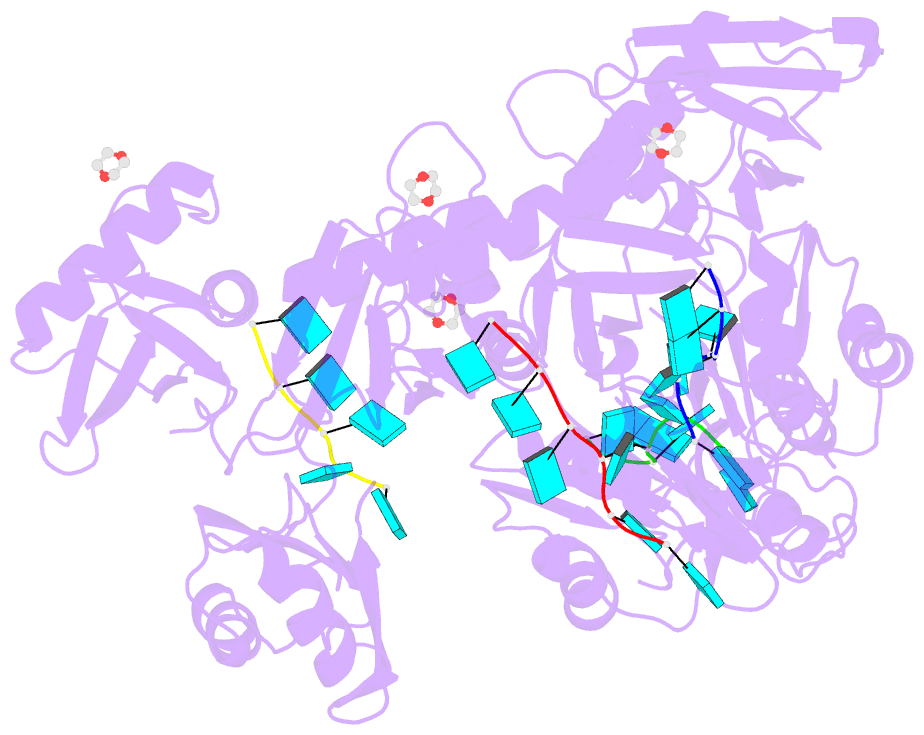Summary information and primary citation
- PDB-id
-
3val;
SNAP-derived features in text and
JSON formats
- Class
- RNA binding protein-DNA
- Method
- X-ray (2.5 Å)
- Summary
- Structure of u2af65 variant with bru5c1 DNA
- Reference
-
Jenkins JL, Agrawal AA, Gupta A, Green MR, Kielkopf CL
(2013): "U2AF65
adapts to diverse pre-mRNA splice sites through
conformational selection of specific and promiscuous RNA
recognition motifs." Nucleic Acids Res.,
41, 3859-3873. doi: 10.1093/nar/gkt046.
- Abstract
- Degenerate splice site sequences mark the intron
boundaries of pre-mRNA transcripts in multicellular
eukaryotes. The essential pre-mRNA splicing factor U2AF(65)
is faced with the paradoxical tasks of accurately targeting
polypyrimidine (Py) tracts preceding 3' splice sites while
adapting to both cytidine and uridine nucleotides with
nearly equivalent frequencies. To understand how U2AF(65)
recognizes degenerate Py tracts, we determined six crystal
structures of human U2AF(65) bound to cytidine-containing
Py tracts. As deoxy-ribose backbones were required for
co-crystallization with these Py tracts, we also determined
two baseline structures of U2AF(65) bound to the
deoxy-uridine counterparts and compared the original,
RNA-bound structure. Local structural changes suggest that
the N-terminal RNA recognition motif 1 (RRM1) is more
promiscuous for cytosine-containing Py tracts than the
C-terminal RRM2. These structural differences between the
RRMs were reinforced by the specificities of wild-type and
site-directed mutant U2AF(65) for region-dependent
cytosine- and uracil-containing RNA sites. Small-angle
X-ray scattering analyses further demonstrated that Py
tract variations select distinct inter-RRM spacings from a
pre-existing ensemble of U2AF(65) conformations. Our
results highlight both local and global conformational
selection as a means for universal 3' splice site
recognition by U2AF(65).





